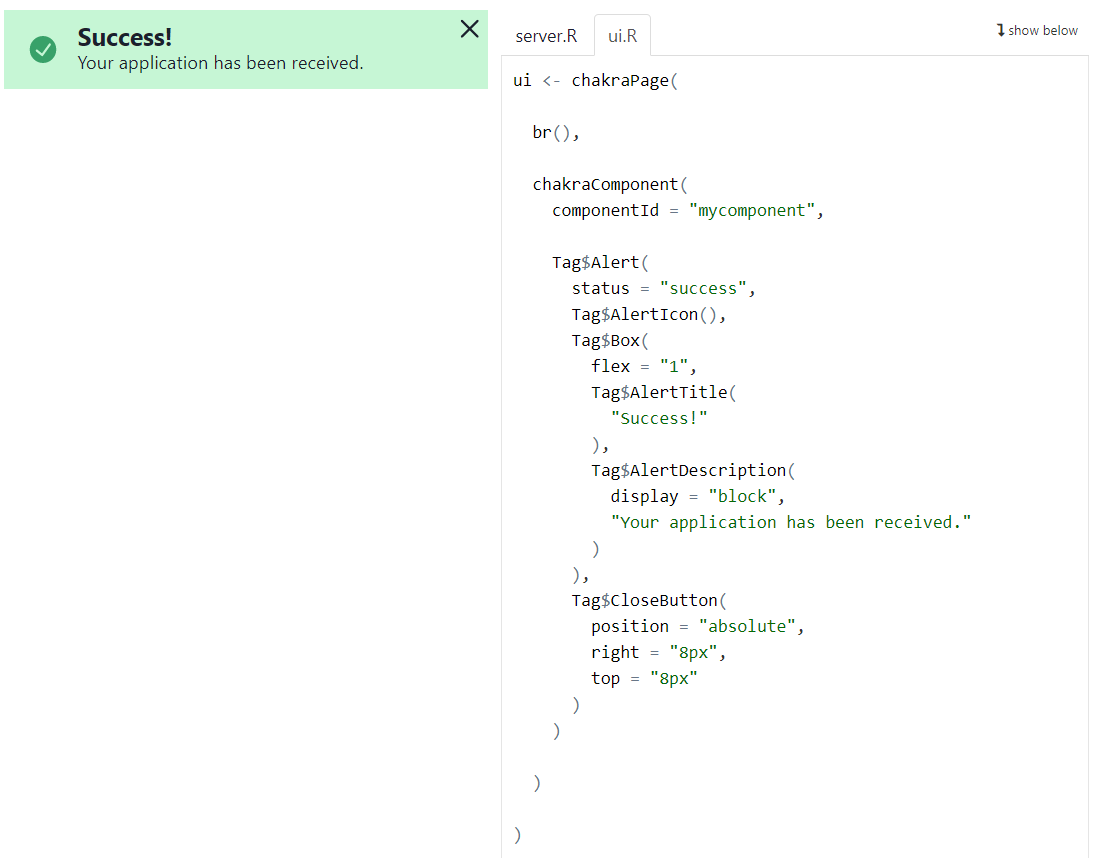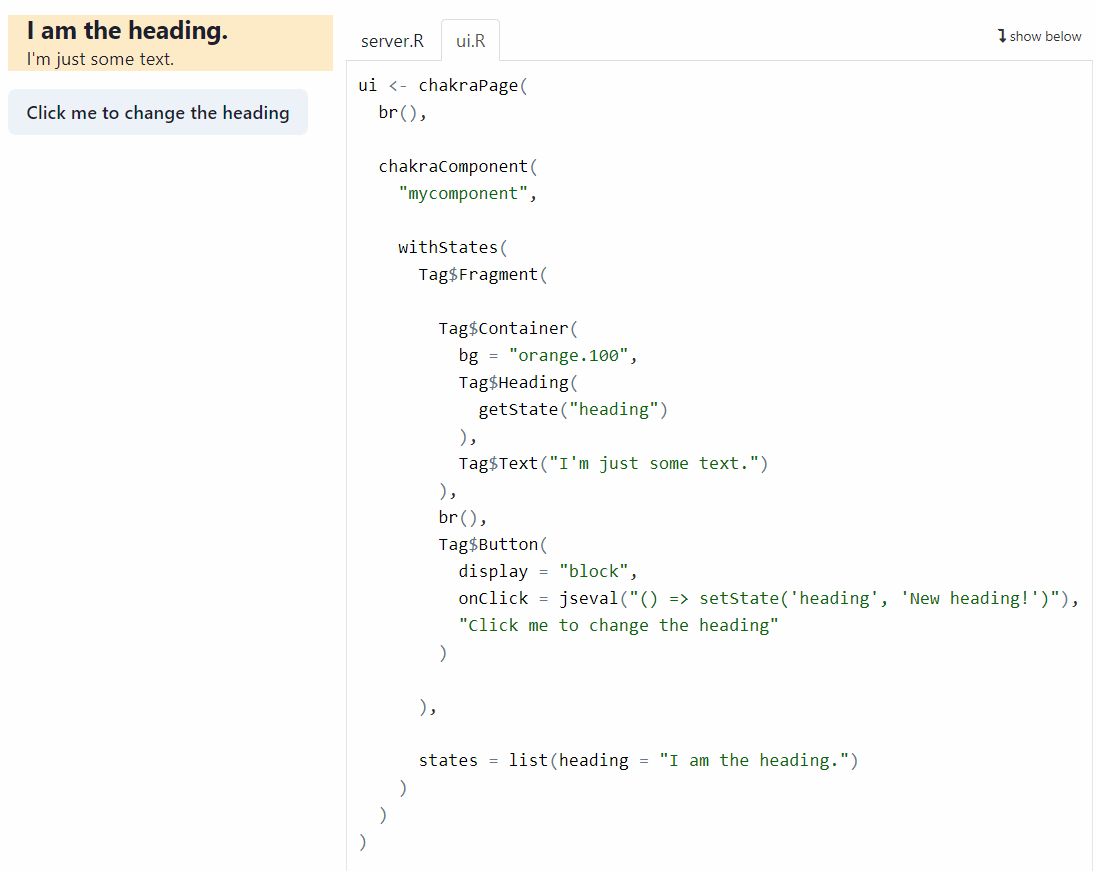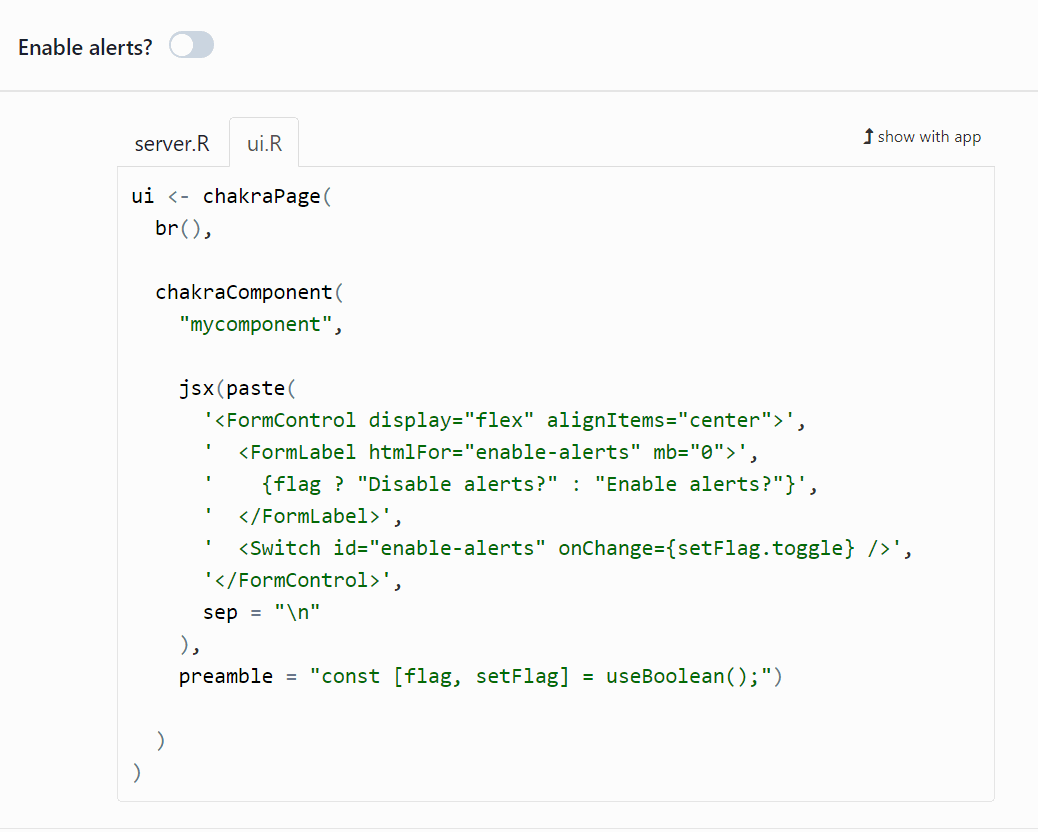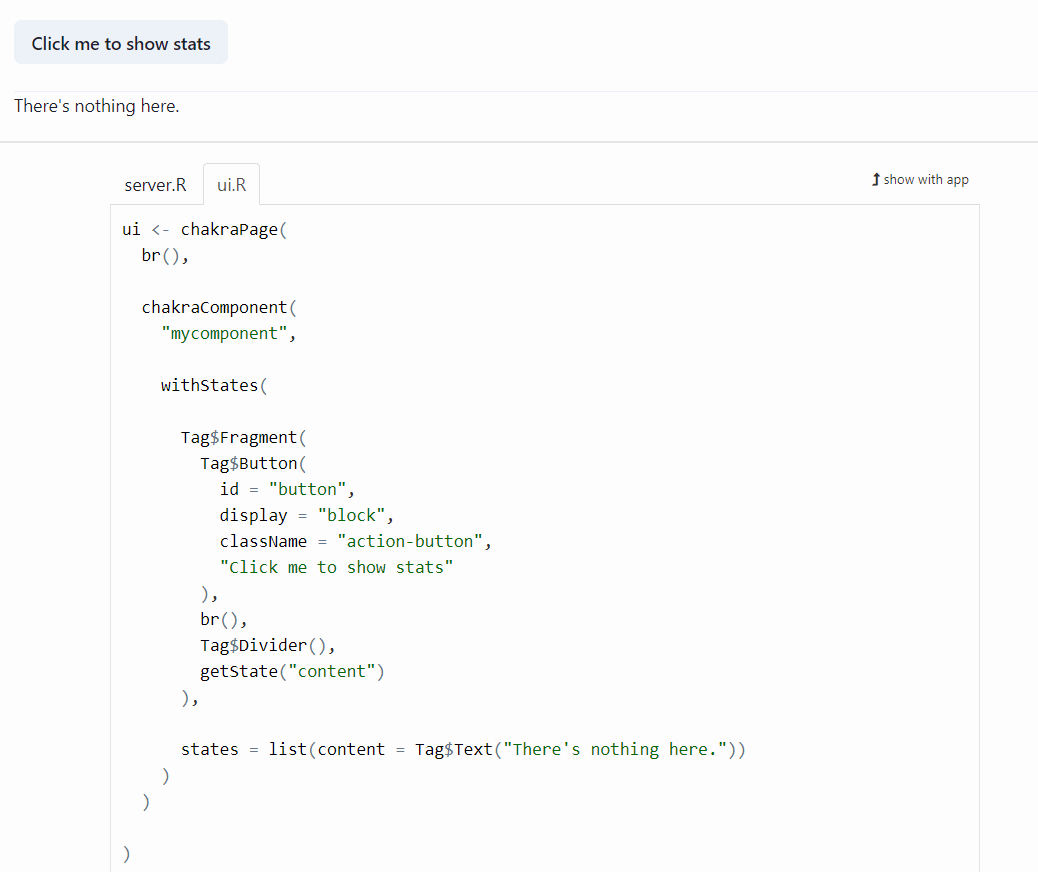
The hardware and bandwidth for this mirror is donated by METANET, the Webhosting and Full Service-Cloud Provider.
If you wish to report a bug, or if you are interested in having us mirror your free-software or open-source project, please feel free to contact us at mirror[@]metanet.ch.
library(shiny)
library(shinyChakraUI)The shinyChakraUI package is a wrapper of the React
library Chakra UI. A very good documentation of this
library is available at https://chakra-ui.com/.
Use chakraPage to define your Shiny UI.
Use chakraComponent to define a Chakra
component.
For example, here is a Chakra alert component:

You can use React states with the help of the withStates
function. Here is an example:

The states are defined in the second argument of the
withStates function, in a list. Here one state is defined:
heading = "I am the heading.". The state is obtained in the
Chakra component with the help of the R function getState.
To change the value of a state, you have to resort to JavaScript. The
JavaScript code must be given as a character string in the R function
jseval. Here it is given in the onClick
attribute of the Chakra button:
jseval("() => setState('heading', 'New heading!')").
When the button is clicked, the 'heading' state takes the
new value 'New heading!'.
So far, we built React components with the help of the
Tag constructor. It is also possible to build a React
component by writing its JSX code, with the help of the jsx
function. Here is an example:

The jsx function takes two arguments. The first one is
the JSX element and the second one, named preamble, is some
JavaScript code to be executed at first.
In the 'heading' React state example, we set the new
value of the state with the help of the JavaScript function
setState, executed from the R function jseval.
It is also possible to set a React state from the Shiny server function,
with the setReactState function. It offers more
possibilities: it allows to set as a new value a React component, a JSX
element, a Shiny widget, or some HTML code. Here is an example:

Run chakraExamples() to get the list of available
examples provided in the package. See also the examples of the built-in
widgets chakraAlertDialog,
chakraCheckboxWithChildren, chakraDrawer,
chakraSlider, chakraCombinedSlider, and
chakraModal.
The package provides a RStudio addin which allows to convert some JSX
code to the corresponding R code to use in the
chakraComponent function. For example, consider this JSX
code:
<CheckboxGroup colorScheme="green" defaultValue={["naruto", "kakashi"]}>
<HStack>
<Checkbox value="naruto">Naruto</Checkbox>
<Checkbox value="sasuke">Sasuke</Checkbox>
<Checkbox value="kakashi">kakashi</Checkbox>
</HStack>
</CheckboxGroup>Copy it to your clipboard, and then select the ‘JSX parser’ addin in the RStudio Addins menu. You’ll get this R code:
Tag$CheckboxGroup(
colorScheme = "green", defaultValue = list("naruto", "kakashi"),
Tag$HStack(
Tag$Checkbox(value = "naruto", "Naruto"),
Tag$Checkbox(value = "sasuke", "Sasuke"),
Tag$Checkbox(value = "kakashi", "kakashi")
)
)This JSX parser is not perfect. It may fail, or you may have to manually modify the output.
These binaries (installable software) and packages are in development.
They may not be fully stable and should be used with caution. We make no claims about them.